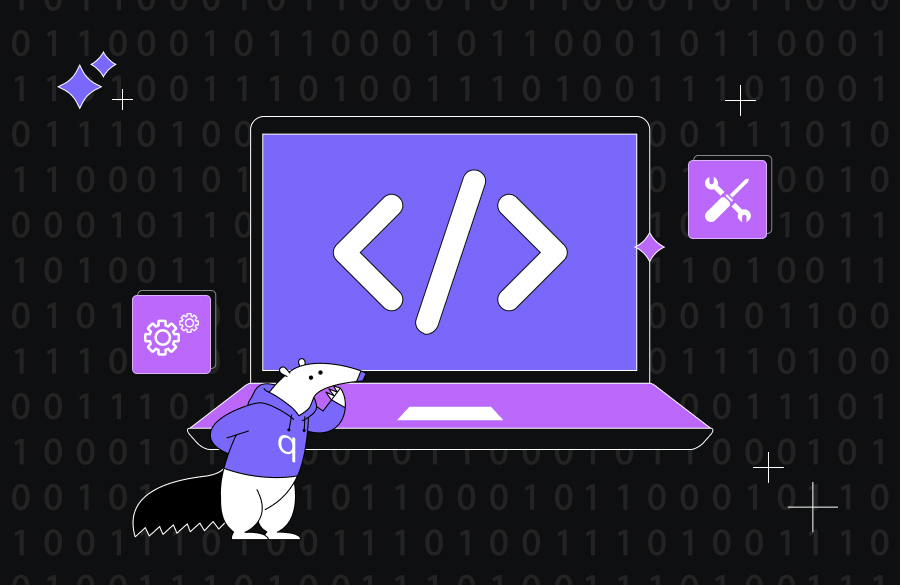Software and Code Complexity in 2025: Metrics & Best Practices


In 2025, software complexity is a challenge every developer, tech lead, and engineering team must address. Complexity is inevitable, but with modern code complexity metrics, automated tools, and a disciplined approach to design and refactoring, you can keep your software lean, maintainable, and scalable. In this article, we’ll explore what software complexity means, how to use software complexity metrics effectively, and the most practical best practices for keeping software and code complexity under control.
Understanding Software Complexity
Software complexity refers to how difficult a software system is to understand, maintain, and modify. It’s influenced by many factors, including architecture, code structure, dependencies, team size, and even documentation practices.
There are two main categories of software complexity.
1. Essential complexity:
The inherent difficulty in solving a problem due to its nature. For example, developing a real-time financial trading platform that ensures data consistency, low latency, and strict compliance with regulations also contains high essential complexity.
This system is complex because the problem domain is complex. No matter how well you design your software, the complexity remains.
2. Accidental complexity:
The complexity added due to the way a problem is solved. Poorly written code, overengineering, unnecessary abstraction, or inadequate tooling all contribute to accidental complexity. For example, creating a custom solution for a problem that could have been solved using standard libraries leads to extra development time, hard-to-maintain code, and inconsistent behavior.
Why Software Complexity Matters in 2025
Modern applications often rely on dozens of services, APIs, and third-party tools. Without proper practices and observability, this often leads to emergent complexity that teams struggle to track or predict. Here’s why this is a growing concern:
- As complexity grows, even simple changes can have a big impact across the entire system. Debugging becomes time-consuming because developers must navigate unfamiliar dependencies, outdated documentation, or unclear logic flows.
- Code that is difficult to understand is harder to test.
- Complex codebases make it harder for new hires to ramp up, increasing onboarding costs.
- When complexity isn’t addressed early, it accumulates, increasing technical debt. Shortcuts taken for speed become long-term liabilities that hinder future development and innovation.
What is Code Complexity, and How Can We Measure It?
Code complexity refers to several different aspects of complexity in coding, including cyclomatic complexity, cognitive complexity, lines of code, and several others.
To manage code complexity, you must first measure it using objective metrics. This will help you make data-driven decisions about refactoring, reviewing, and scaling software systems.
Here are the most commonly used code complexity metrics:
1. Cyclomatic complexity
This metric measures the number of independent paths through a program’s source code, counting the number of different ways the code can be executed based on conditions like if, while, for, case, etc. The higher the number, the more difficult the code is to test and maintain. A high score (>20) means you should consider refactoring. High cyclomatic complexity often correlates with difficult-to-understand logic, poor test coverage, greater risk of bugs, and increased effort to maintain and refactor.
2. Cognitive complexity
This metric evaluates how difficult the code is for a human to read, understand, and follow. It penalizes code for things like deep nesting, recursion, and abrupt control flow-factors that make code harder to comprehend, even if the logic itself is not particularly convoluted. For example, cognitive complexity scores increase with nesting levels (if inside if, loops inside conditionals, etc.) and recursion (which humans often find harder to trace than iteration).
3. Halstead metrics
Halstead metrics are a family of software complexity metrics that assess a program’s complexity through its structure at the syntactic level. They provide quantitative insights into the size, volume, and effort required to understand and maintain a program.
Halstead metrics are calculated using four basic measurements:
- Number of distinct operators,
- Number of distinct operands,
- Total number of operators,
- Total number of operands.
From these measurements, the following values are calculated: vocabulary, length, volume, difficulty, effort, estimated time to program, and estimated number of bugs.
Halstead metrics are especially useful in static analysis tools, highlighting problematic files without relying on manual inspection.
4. Lines of Code (LOC)
LOC is not a standalone indicator of quality, but it can reveal classes or functions that may need modularization.
5. Maintainability index
This composite metric combines cyclomatic complexity, lines of code, and Halstead volume (i.e., size of the implementation in bits) to produce a score from 0 to 100. Higher scores indicate easier-to-maintain code.
The maintainability index provides a valuable shorthand for code health, especially when scanning large projects or enforcing standards across teams. It helps identify hot spots that may otherwise go unnoticed.
Once you understand the key code complexity metrics, the next step is to use the right tools to gather and act on this data.
- SonarQube offers comprehensive static analysis across 25+ languages. It tracks cyclomatic and cognitive complexity, code smells, duplication, and maintainability, and is great for enterprise teams with CI/CD integration and real-time IDE feedback.
- CodeScene adds behavioral analysis to traditional metrics. It highlights complexity hotspots based on Git history, developer churn, and change coupling, which is ideal for managing legacy systems or scaling teams.
- Codacy automates code reviews with metrics like cyclomatic complexity, duplication, and coverage. It seamlessly integrates with Git workflows and CI/CD pipelines.
- DeepSource provides inline pull request feedback for complexity and maintainability issues, making it ideal for Agile teams and startups.
- Modern editors like VS Code or IntelliJ IDEA offer in-editor visualization of complexity metrics for immediate feedback during development.
Best Practices for Managing Software Complexity
With complexity metrics in place, you can begin applying practices that reduce and control complexity at every stage of development.
1. Modular design and microservices
Breaking applications into small, independent modules or services makes systems easier to scale, test, and deploy. This aligns closely with the single responsibility principle – the idea that every module or class should have only one responsibility.
2. Clean code principles
These are practices that promote readability and maintainability. Some examples:
- Choose descriptive and intention-revealing names for variables, functions, classes, and modules.
- Avoid deeply nested conditionals or loops.
- Write clear comments and documentation.
- Don’t repeat yourself (i.e., eliminate duplication to make changes easier and safer).
- YAGNI (”you aren’t gonna need it)”; i.e., don’t write code for hypothetical future use cases, because it adds accidental complexity.
3. Refactor often
Refactoring is the process of restructuring existing code without changing its external behavior. As codebases grow and evolve, it’s natural for technical debt and complexity to creep in, especially when deadlines pressure teams to prioritize speed over design.
- Integrate refactoring into your Definition of Done or sprint planning.
- Metrics mentioned in the previous section can reveal high-risk areas. Focus refactoring efforts where these scores are poor.
- Use automated refactor tools in the IDE to rename variables, extract methods, or simplify logic without introducing regressions. Make one change at a time and commit frequently.
4. Automate complexity analysis
Integrate static code analysis tools from the previous section for real-time feedback and alert developers when complexity exceeds acceptable thresholds.
5. Invest in unit and integration testing
Robust testing is one of the most effective ways to manage and reduce software complexity. It creates a safety net that gives developers the confidence to refactor, optimize, or scale code without introducing regressions.
6. Limit inheritance and prefer composition
Inheritance is a powerful tool in object-oriented programming, but overusing it can lead to unnecessarily complex software.. Deep inheritance chains introduce tight coupling between classes, making the code harder to understand, change, and test. Instead, adopt the design principle of composition, which encourages you to build flexible systems by assembling small, focused components.
7. Document decisions and architecture
Without proper documentation, architectural intent may get lost over time as teams change and requirements shift. This leads to confusion, duplicated effort, and reintroducing previously resolved issues. Use architecture decision records (ADRs) to keep a log of significant design choices to avoid such problems.
Software Complexity And Technical Debt
Technical debt is a term introduced by Ward Cunningham to describe the long-term cost of taking shortcuts in software development. It accumulates extra effort required to add features, fix bugs, or onboard new developers. While some technical debt is strategic (to meet a deadline, for instance), unmanaged or excessive debt often stems from unresolved software complexity.
Complexity increases technical debt. This leads to the following issues.
- Code is hard to modify or extend. Excessive branching, poor modularization, and tight coupling make it risky to introduce changes without breaking something.
- Developers avoid certain parts of the codebase. When areas of code are too confusing or brittle, teams build workarounds instead of improving the core logic, leading to redundant logic and inconsistent behavior.
- Bugs emerge in areas nobody fully understands. Complexity obscures intent. If the original rationale behind the code isn’t clear (and isn’t documented), fixing issues becomes guesswork, increasing the chance of regressions.
This creates a feedback loop: the more complex the system becomes, the more technical debt accrues, and the harder it is to reduce. Reducing complexity is a direct way to reduce technical debt.
Trends To Keep in Mind in 2025
- AI-assisted code review tools increasingly highlight complexity issues during code writing, not just during review, and can alert a developer that a new function has excessive nesting or too many decision branches, prompting real-time redesign before complexity takes root.‚
- Low-code and no-code platforms are shifting complexity from code to configuration, requiring new strategies to measure and manage complexity.
- Complexity-aware CI/CD pipelines will gate merges or deployments based on code health scores. It’s now common to see automated gates that reject merges or prevent deployments when code fails to meet predefined thresholds for maintainability, duplication, or test coverage.
- Graph-based dependency analysis tools will become more mainstream for tracking architectural complexity. They help detect anti-patterns like tight coupling, dependency cycles, or uncontrolled module sprawl issues that can be invisible in traditional static analysis.
FAQs
What are the main types of software complexity?
There are two main types of complexity:
- Essential complexity: unavoidable complexity stemming from the problem domain itself,
- Accidental complexity: complexity introduced by the solution, such as convoluted code or poor architecture.
What are the risks of not managing software complexity?
Unchecked complexity leads to:
- Slower development
- More bugs and regressions
- Harder onboarding for new developers
- Higher maintenance costs
- Growing technical debt
How does technical debt relate to software complexity?
Technical debt often grows from unmanaged complexity. As systems become harder to understand and change, the cost of fixing or extending them increases.


